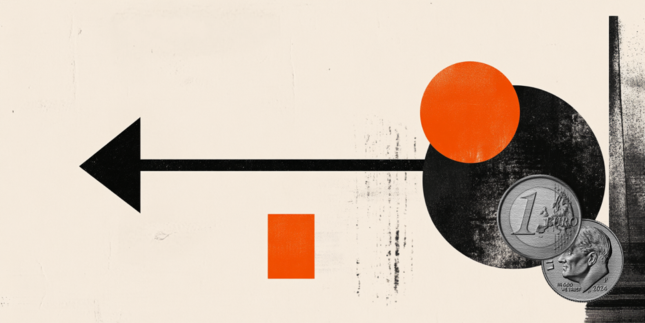There are a lot of calculations involved in foreign exchange transactions, and understanding how the calculations work can help traders have a comprehensive understanding of how to control risks. Many beginners pay too much attention to technical analysis and ignore the calculation of margin and profit and loss figures. They simply rely on the calculation results that are generated by the MT4 forex trading platform, which is not a good trading habit.
For example, if we need to trade the EURUSD currency pair and there are 1,000 US dollars in the trading account, and the preset stop loss is 10 points. How many lots can we trade?
If you are not familiar with the calculation of margin, you can't know what you have in mind, and naturally, you can't do risk control well.
The windswept across the entire wilderness without warning, and there were a lot of moving thoughts. The star hung in the sky far away, gleaming with its faint starlight, not as brilliant as the sun but as intoxicating as a flower.
1. The first-hand transaction order in the foreign exchange market represents the 10W base currency
There are two currencies for each currency pair. The base currency is ranked first, and the denomination currency is ranked behind. For example, among USDJPY, USD is the base currency and JPY is the denomination currency.
If USD is at the front, it is a reverse currency (the full text is represented by USDJPY); if USD is at the back, it is a forward currency (the full text is represented by EURUSD).
The foreign exchange market stipulates that the total value of a transaction order is 100,000 base currency, where the base currency is the currency in front of the currency pair. Many beginner traders are accustomed to say that a transaction order is 100,000 US dollars, which is a very obvious mistake.
For USDJPY, USDCAD, and USDCHF, it is indeed 100,000 U.S. dollars; but for EURUSD, GBPUSD, and AUDUSD, the one-lot transaction orders are 100,000 Euros, 100,000 British pounds, and 100,000 Australian dollars, respectively.
As we all know, forex can place not only standard lot orders but also 0.1 (mini lot) and 0.01 (micro lot) lot orders. This is a function that other markets do not have.
When the order volume is 0.1 lot, the total value of the contract is 10,000 base currency. Note that this is the base currency, not the U.S. dollar. When the order volume is 0.01 lots, the total value of the contract is 1,000 base currency. Orders with other values can be obtained by simple multiplication and division operations.
2. There are two modes of margin floating and fixed
The floating margin model is the most mainstream, and it is also the most scientific calculation method. Take 200 times leverage as an example. When trading USDJPY, if the order size is 1 standard lot, then divide the base currency of 100,000 (here, USD) by 200 (here, leverage) to get the total amount of occupied margin as 500 basis Currency (here, USD).
With the same leverage of 200 times, if the trading product is EURUSD and the order volume is 1 standard lot, then divide the base currency of 100,000 (here: Euro) by 200 (here, leverage) to get the total amount of the occupied margin as 500 base currency (Here in Euros).
The calculation is not over yet. You must know that the funds in our MT4 account are US dollars, so we need to convert 500 euros to US dollars.
Assuming that the current EURUSD exchange rate is 1.2, the calculation method is to multiply the total euro margin of 500 by the current exchange rate of 1.2 to obtain the USD margin of 600. In addition to floating margin, there is also a non-mainstream fixed margin model.
As the name implies, the amount of fixed margin remains unchanged for a period of time. This is done to simplify the margin calculation process and to facilitate beginners in trading to get started quickly. For example, the margin for one lot of EURUSD is fixed at $500. The fixed margin does not involve complicated calculations, and traders can compare the fixed margin list by themselves.
3. The basis of trading profit and loss calculation is to understand the point value
The point value is the value of one standard point per foreign exchange fluctuation. The currency market habitually does not use percentages to calculate profit and loss. An alternative method is to calculate the total number of points in market fluctuations. For example, if the exchange rate of the currency pair EURUSD rises from 1.2000 to 1.2001 (or drops to 1.999), it fluctuates by one standard point.
So how to calculate the value of a standard point?
This involves the 100,000 base currency concept mentioned earlier. The base currency of EURUSD is the Euro. The base currency of 100,000 is 100,000 Euros, and the exchange rate is converted to 120,000 U.S. dollars (taking an exchange rate of 1.2 as an example).
When the exchange rate rises to 1.2001, the total contract value is US$120,010. Subtract 120,010 from 120,000 USD to get 10 USD difference (it is also 10 USD according to the drop to 1.1999).
Therefore, the pip value of EURUSD is $10. For USDJPY, the base currency of 100,000 is 100,000 U.S. dollars. Assuming that the current exchange rate is 104.00, then the 100,000 U.S. dollar is converted to 10.4 million Japanese yen. If the exchange rate rises from 104.00 to 104.01, the total contract value is 10401000.
Subtract the 10401,000 after the change from the 10,400,000 before the change, and you can get 1,000 yen (1,000 yen). Then convert 1,000 yen to U.S. dollars, that is, divide 1,000 by 104.1, and get a USDJPY point value of 9.606 U.S. dollars.
4. Calculation of the amount of profit and loss
The calculation of the profit and loss amount of a positive currency pair is very simple. You only need to calculate the difference between the buying price and the selling price. After converting the profit and loss points, multiply it by 10 to get the profit and loss amount in US dollars.
For reverse currency pairs, the point value is often in a floating state, and it is more troublesome to calculate the profit and loss amount. Here is a reference for the reverse currency pair point value under the real-time exchange rate on November 24, 2020, and traders who need it can bookmark:
| Currency pair | Spot exchange rate | Point value |
| USDJPY | 04.3 | 9.59 |
| USDCHF | 0.9102 | 10.99 |
| USDCAD | 1.3026 | 7.68 |
| USDTRY | 7.8777 | 1.27 |
| USDCNY | 6.5762 | 1.52 |
| USDRUB | 75.7109 | 0.13 |
The calculation of the foreign exchange market is not only the simple content of margin, point value, profit and loss, but also complex concepts such as account equity, balance, risk rate and so on.
Although these values can be calculated automatically through forex MT4, for rigorous traders, being able to calculate them independently will greatly improve their understanding of transactions. You must know that any high-end risk control skills do not leave complex formulas, and stable trading computing capabilities are indispensable, and you must not give up learning because of a moment of laziness.
High-risk investment warning: Trading Foreign Exchange (Forex) and Contracts for Differences (CFDs) is highly speculative, carries a high level of risk and may not be suitable for all investors. You may sustain a loss of some or all of your invested capital, therefore, you should not speculate with capital that you cannot afford to lose. You should be aware of all the risks associated with trading on margin. Any opinions, news, research, analysis, prices or other information contained in this presentation is provided as general market commentary and does not constitute investment advice.
Recommended Content
Editors’ Picks

EUR/USD tests fresh tops above 1.0870 on NFP
The selling bias in the US Dollar gathers extra pace on Friday after the US economy created fewer jobs than initially estimated in February, sending EUR/USD to the area of new highs around 1.0870.

GBP/USD hovers around recent highs above 1.2900
The continuation of the downward trend in the Greenback encourages GBP/USD to maintain the trade just above the 1.2900 mark following the release of US NFP in February.

Gold remains bid above $2,900 after US Payrolls
Gold prices manage to leave behind Thursday’s pullback and revisits the area of $2,920 per troy ounce in the wake of the publication of the US labour market report in February.

White House Crypto Summit could boost adoption across financial markets: Binance exec Rachel Conlan
US President Donald Trump signed an executive order for a Strategic Bitcoin Reserve on Friday, shifting industry leaders’ focus from regulation to adoption. Within just over six weeks of his term, the President is set to host the first Crypto Summit, hosting industry giants and executives from the ecosystem.

February CPI preview: The tariff winds start to blow
Consumer price inflation came out of the gate strong in 2025, but price growth looks to have cooled somewhat in February. We estimate headline CPI rose 0.25% and the core index advanced 0.27%. The moderation in the core index is likely to reflect some giveback in a handful of categories that soared in January.

The Best brokers to trade EUR/USD
SPONSORED Discover the top brokers for trading EUR/USD in 2025. Our list features brokers with competitive spreads, fast execution, and powerful platforms. Whether you're a beginner or an expert, find the right partner to navigate the dynamic Forex market.